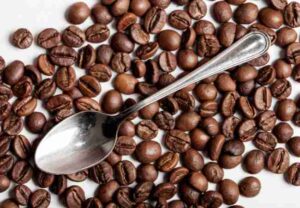Coffee lovers, rejoice! In the magical world of brewing the perfect cup of coffee, one question seems to reign supreme: how many coffee beans per cup do you really need? Well, fear not, caffeine enthusiasts, because we’re about to unravel the mystery for you.
You see, the ideal coffee-to-water ratio is crucial in determining the strength, flavor, and overall enjoyment of your favorite brew. While there isn’t a one-size-fits-all answer, experts suggest a general guideline to achieve that perfect cuppa.
Finding the right balance between coffee beans and water not only affects the taste but also plays a significant role in avoiding a weak or overpowering brew. Think of it as a delicate dance between the two elements, where harmony is the ultimate goal.
In this article, we’ll dive into the science behind the magic ratio and explore the factors that influence it. We’ll also provide some practical tips to help you find your blissful equilibrium.
So, whether you prefer a bold and robust flavor or a milder and more subtle taste, keep reading to discover the magic ratio that will elevate your coffee experience to new heights. Get ready to brew like a true coffee connoisseur!
Understanding the importance of coffee bean to cup ratio
The coffee bean to cup ratio is the key to unlocking the flavors and aromas hidden within those little brown beans. It’s the magic formula that determines whether your cup of joe will be a heavenly delight or a disappointing letdown.
When it comes to brewing coffee, the ratio refers to the amount of coffee beans relative to the amount of water used. This ratio is crucial because it determines the extraction level of the coffee grounds, resulting in either a strong or weak cup of coffee.
Too few coffee beans in proportion to water will yield a weak and insipid brew, lacking in flavor and complexity. On the other hand, using too many coffee beans can lead to an overpowering and bitter taste that overwhelms the palate.
To strike the perfect balance, you’ll need to experiment with different ratios to find the one that suits your taste preferences. Remember, it’s a personal journey, and what works for one person may not work for another.
Factors that affect the coffee bean to cup ratio
Several factors come into play when determining the ideal coffee bean to cup ratio. Understanding these factors will help you fine-tune your brewing process and achieve the perfect balance of flavors.
1. Coffee Roast Level: The roast level of your coffee beans significantly affects the extraction process. Lighter roasts generally require a higher coffee bean to water ratio to bring out their delicate flavors, while darker roasts can handle a lower ratio without becoming overly strong.
2. Grind Size: The grind size of your coffee beans dictates the surface area exposed to water during brewing. Finer grinds require less coffee beans, while coarser grinds require more. Experiment with different grind sizes and ratios to find the sweet spot for your preferred brewing method.
3. Brewing Method: Different brewing methods, such as pour-over, French press, or espresso, require varying coffee bean to cup ratios. Each method has its own set of guidelines to achieve the best results. We’ll explore these ratios in more detail later in the article.
4. Personal Preference: Ultimately, your personal taste preference plays a significant role in determining the coffee bean to cup ratio. Some people enjoy a stronger and bolder flavor, while others prefer a milder and more subtle taste. Don’t be afraid to experiment and adjust the ratio to suit your individual palate.
Recommended coffee bean to cup ratios for different brewing methods
Now that we’ve covered the factors that influence the coffee bean to cup ratio, let’s dive into the recommended ratios for various brewing methods. These guidelines will serve as a starting point for your brewing adventures, but feel free to tweak them to your liking.
1. Pour-Over: For pour-over brewing, a popular method known for its clean and nuanced flavors, a general ratio of 1:16 is commonly recommended. This means using 1 gram of coffee beans for every 16 grams of water. Adjust the ratio slightly based on personal preference and the strength of the coffee you desire.
2. French Press: The French press method, known for its full-bodied and rich brew, typically calls for a higher coffee bean to water ratio. A ratio of 1:15 or 1:17 is often suggested, meaning 1 gram of coffee beans for every 15 or 17 grams of water. Again, feel free to adjust the ratio to achieve your desired taste.
3. Espresso: When it comes to espresso, the brewing process is quite different from other methods. The recommended ratio for espresso is around 1:2, meaning 1 gram of coffee beans for every 2 grams of water. However, this ratio can vary depending on the specific espresso machine, coffee blend, and personal preference.
4. Cold Brew: Cold brew enthusiasts will be pleased to know that this brewing method allows for a higher coffee bean to water ratio. A ratio of 1:8 or 1:10 is often suggested for a strong and concentrated cold brew. Experiment with different ratios and brewing times to find the perfect balance for your taste buds.

Experimenting with different coffee bean to cup ratios
As with any culinary art, brewing coffee is a journey of exploration and experimentation. While the recommended ratios provide a solid starting point, don’t be afraid to venture into uncharted territory and try different coffee bean to cup ratios.
Start by adjusting the ratio slightly and brewing a small batch. Taste the resulting coffee and take note of the flavors, acidity, and body. If you find the brew too weak, increase the coffee bean ratio, and vice versa. Keep refining the ratio until you discover your perfect cup of coffee.
Remember, the goal is to find that delicate balance where the flavors of the coffee beans shine through, while avoiding any overpowering or weak characteristics.
The impact of coffee bean freshness on the ratio
Now that we’ve covered the importance of the coffee bean to cup ratio, it’s essential to touch on the impact of coffee bean freshness. Freshly roasted coffee beans retain their flavors and aromas, providing a more enjoyable brewing experience.
When using fresher coffee beans, you may find that you need a slightly lower ratio to achieve the desired strength. This is because fresher beans have a higher concentration of flavor compounds, allowing for a more efficient extraction process.
On the other hand, older coffee beans that have lost some of their flavor may require a slightly higher ratio to compensate for the diminished taste. It’s always a good idea to use freshly roasted beans for the best possible coffee experience.

Common mistakes to avoid when measuring coffee beans
To ensure accuracy in measuring coffee beans, it’s important to avoid common mistakes that can throw off the coffee bean to cup ratio. Here are some pitfalls to watch out for:
1. Eyeballing: Guessing the amount of coffee beans without using a scale can lead to inconsistent results. Invest in a good-quality scale and weigh your coffee beans for precise measurements.
2. Using Volume Measurement: Measuring coffee beans by volume, such as tablespoons, can be misleading due to variations in bean size and density. Stick to weighing your beans for accurate ratios.
3. Forgetting to Account for Loss: During the brewing process, some water is retained in the coffee grounds, resulting in a loss of liquid. When measuring your coffee beans, consider this loss and adjust the ratio accordingly.
4. Not Calibrating Your Grinder: If you’re using a coffee grinder, make sure it’s properly calibrated to achieve consistent grind sizes. Inconsistent grind sizes can affect the extraction process and result in an imbalanced cup of coffee.
Tools and techniques for measuring coffee beans accurately
To achieve precise measurements when it comes to coffee beans, here are some tools and techniques you can employ:
1. Digital Scale: Invest in a digital scale that measures in grams for accurate and consistent results. This will help you maintain the desired coffee bean to water ratio.
2. Coffee Scoop: A coffee scoop with a set capacity can be a convenient tool for measuring your coffee beans. However, it’s still advisable to verify the weight of the beans using a scale for maximum accuracy.
3. Grind Size Consistency: To ensure consistent results, it’s crucial to use a grinder that produces uniformly sized coffee grounds. Adjust your grinder settings accordingly and maintain a consistent grind size for accurate measurements.

Adjusting the coffee bean to cup ratio for personal preference
While the recommended coffee bean to cup ratios provide a solid foundation, it’s important to remember that personal preference plays a significant role in achieving your perfect cup of coffee. Don’t be afraid to deviate from the guidelines and adjust the ratio to suit your taste buds.
If you prefer a bolder and stronger brew, increase the coffee bean ratio slightly. Conversely, if you enjoy a milder and more delicate flavor, decrease the coffee bean ratio. The beauty of brewing coffee lies in the ability to tailor it to your individual preferences.
Conclusion and final thoughts on finding the perfect coffee bean to cup ratio
In the pursuit of the perfect cup of coffee, the coffee bean to cup ratio holds the key to unlocking the full potential of your brew. Experiment with different ratios, adjust based on personal preference, and take note of the flavors and aromas that emerge.
Remember, finding the ideal ratio is a journey of exploration and refinement. Don’t be discouraged if it takes a few attempts to discover your perfect balance. With time and practice, you’ll become a true coffee connoisseur, brewing with precision and creating a cup of coffee that is uniquely yours.
So, the next time you find yourself pondering how many coffee beans per cup you really need, embrace the magic ratio and let your taste buds guide you. Elevate your coffee experience and savor every sip of your own perfectly brewed masterpiece. Cheers to the art of coffee!


Very interesting information!Perfect just what I was looking
for!Blog range